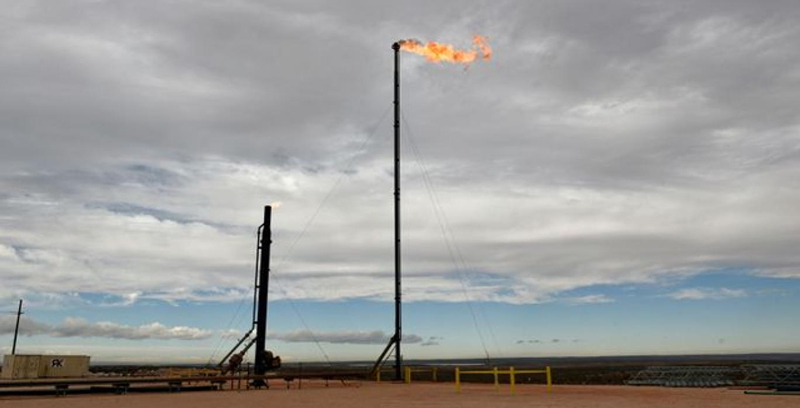
European gas futures TRNLTTFMc1 plunged 30% on Wednesday as supplies stabilized with high flows from Russia and massive liquefied natural gas (LNG) imports. That prompted traders to take profits after prices soared to record highs over $106 per million British thermal units (mmBtu) earlier in the week as the Russia-Ukraine conflict stoked global energy supply concerns. NG/EUO/R
Before the Russian invasion, the United States worked with other countries to ensure that gas supplies, mostly from LNG, would keep flowing to Europe. Russia, the world's second-biggest gas producer, usually provides around 30% to 40% of Europe's gas, which totaled about 16.3 billion cubic feet per day (bcfd) in 2021.
In the United States, meanwhile, front-month gas futures NGc1 fell 0.1 cent to settle at $4.526 per mmBtu, their lowest close since Feb. 28 for a second day in a row.
U.S. gas futures remain shielded from record European prices because the United States, the world's biggest gas producer, has all the fuel it needs for domestic use and the country's ability to export more LNG is limited by capacity constraints.
The United States is already producing LNG near full capacity, so no matter how high global gas prices rise, it would not be able to produce much more of the supercooled fuel any time soon.
Since U.S. LNG exports were already near maximum capacity, some analysts have noted that soaring global energy prices would likely cause American gas prices to decline as U.S. drillers seek more oil. That will boost the amount of associated gas that comes out of the ground with oil.
The U.S. Energy Information Administration (EIA) projected U.S. gas production will rise from a record 93.6 bcfd in 2021 to 96.7 bcfd in 2022 and 99.2 bcfd in 2023. Much of that additional output will come from oil shale fields like the Permian in Texas and New Mexico.
Data provider Refinitiv said average gas output in the U.S. Lower 48 states was on track to rise to 93.5 bcfd in March from 92.5 bcfd in February as more oil and gas wells return to service after freezing earlier in the year. That compares with a monthly record of 96.2 bcfd in December.
With cooler weather coming next week, Refinitiv projected average U.S. gas demand, including exports, would rise from 110.4 bcfd this week to 111.5 bcfd next week. Those forecast were higher than Refinitiv's outlook on Tuesday.
The amount of gas flowing to U.S. LNG export plants rose to 12.59 bcfd so far in March from 12.43 bcfd in February and a record 12.44 bcfd in January. The United States has the capacity to turn about 12.5 bcfd of gas into LNG. The rest of the fuel flowing to the facilities is used to operate the plants.
Traders said demand for U.S. LNG would remain at or near record levels so long as global gas prices keep trading well above U.S. futures as utilities around the world scramble for cargoes with the threat that Russia could cut gas supplies to Europe.